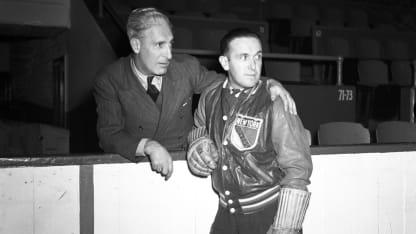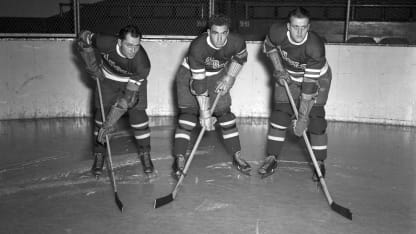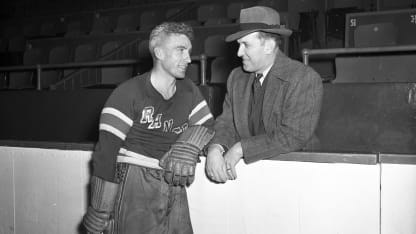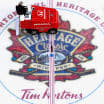Legendary hockey reporter Stan Fischler writes a weekly scrapbook for NHL.com. Fischler, known as "The Hockey Maven," shares his humor and insight with readers each Wednesday.
This week looks back eight decades to the World War II years and how the New York Rangers struggled during the conflict.
Contemporary fans of the New York Rangers could not imagine that it was possible.
How could any other Rangers team endure a tailspin like the 4-15-0 slide from Nov. 21 to Dec. 30 of this season that sent it plummeting to near the bottom of the Metropolitan Division?
One was worse, between 1942-45 during World War II.
For New York hockey fans, the bizarre saga unfolded after the Rangers won the Stanley Cup in 1940, and finished first two years later, under coach Frank Boucher and general manager Lester Patrick.
"World War II saw this Rangers team fade," wrote New York Herald-Tribune hockey writer Kerr N. Petrie in the 1947-48 Rangers hockey guide. "The best of its players were in service, and no worthwhile substitutes were to be had."
Just one year after finishing on top, the Rangers were last among the NHL's Original Six, dropping from a League-leading 60 to 30 points under circumstances far removed from how the current team finished 2024. By the start of the 1942-43 season, wartime enlistments ravaged New York's lineup.
"Since the outbreak of hostilities, over 75 percent of the personnel which comprised the professional leagues had volunteered or were on active service," according to Jim Hendy's "1942-43 National Official Hockey Guide."
Rangers defenseman Muzz Patrick joined the U.S. Army while the Stanley Cup championship team captain Art Coulter enlisted in the U.S. Coast Guard. Forward Alf Pike wound up in the Royal Canadian Air Force and the successful "Bread Line" of Alex Shibicky and Neil and Mac Colville in the Canadian Army.



















